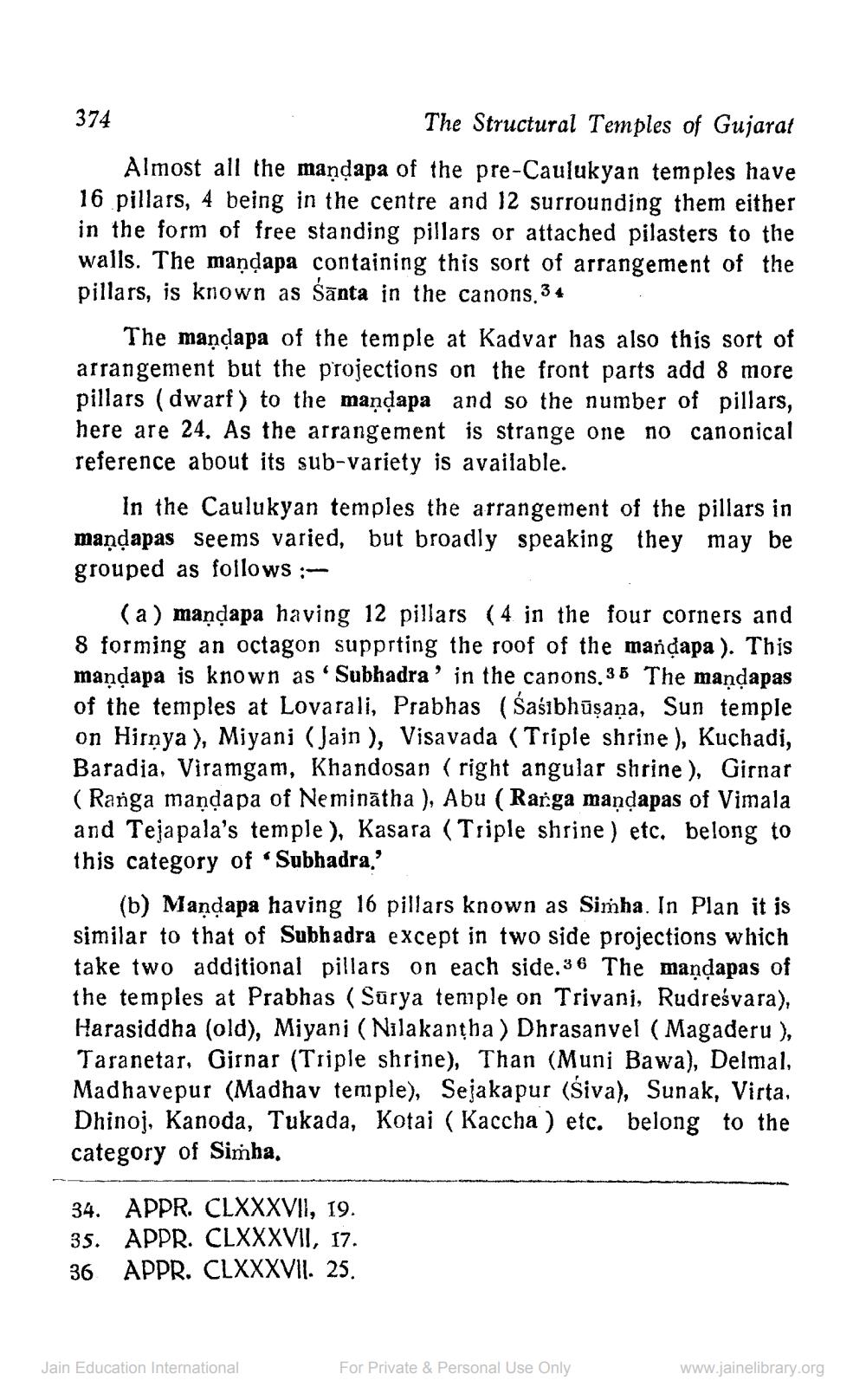________________
374
The Structural Temples of Gujarat Almost all the maņdapa of the pre-Caulukyan temples have 16 pillars, 4 being in the centre and 12 surrounding them either in the form of free standing pillars or attached pilasters to the walls. The maņdapa containing this sort of arrangement of the pillars, is known as śānta in the canons. 34
The manqapa of the temple at Kadvar has also this sort of arrangement but the projections on the front parts add 8 more pillars (dwarf) to the mandapa and so the number of pillars, here are 24. As the arrangement is strange one no canonical reference about its sub-variety is available.
In the Caulukyan temples the arrangement of the pillars in maņdapas Seems varied, but broadly speaking they may be grouped as follows:
(a) maņdapa having 12 pillars (4 in the four corners and 8 forming an octagon supprting the roof of the manďapa ). This maņdapa is known as 'Subhadra' in the canons.35 The mandapas of the temples at Lovarali, Prabhas (Śaśibhūṣaṇa, Sun temple on Hirnya), Miyani (Jain), Visavada (Triple shrine ), Kuchadi, Baradia, Viramgam, Khandosan (right angular shrine), Girnar (Ranga mandapa of Neminātha ), Abu (Rarga mandapas of Vimala and Tejapala's temple), Kasara (Triple shrine ) etc. belong to this category of 'Subhadra.'
(b) Maņdapa having 16 pillars known as Simha. In Plan it is similar to that of Subhadra except in two side projections which take two additional pillars on each side.36 The maņdapas of the temples at Prabhas (Sürya temple on Trivani, Rudreśvara), Harasiddha (old), Miyani (Nilakantha) Dhrasanvel (Magaderu ),
Taranetar, Girnar (Triple shrine), Than (Muni Bawa), Delmal, Madhavepur (Madhav temple), Sejakapur (Śiva), Sunak, Virta, Dhinoj, Kanoda, Tukada, Kotai ( Kaccha ) etc. belong to the category of Simha.
34. APPR. CLXXXVII, 19. 35. APPR. CLXXXVII, 17. 36 APPR. CLXXXVII. 25.
Jain Education International
For Private & Personal Use Only
www.jainelibrary.org




